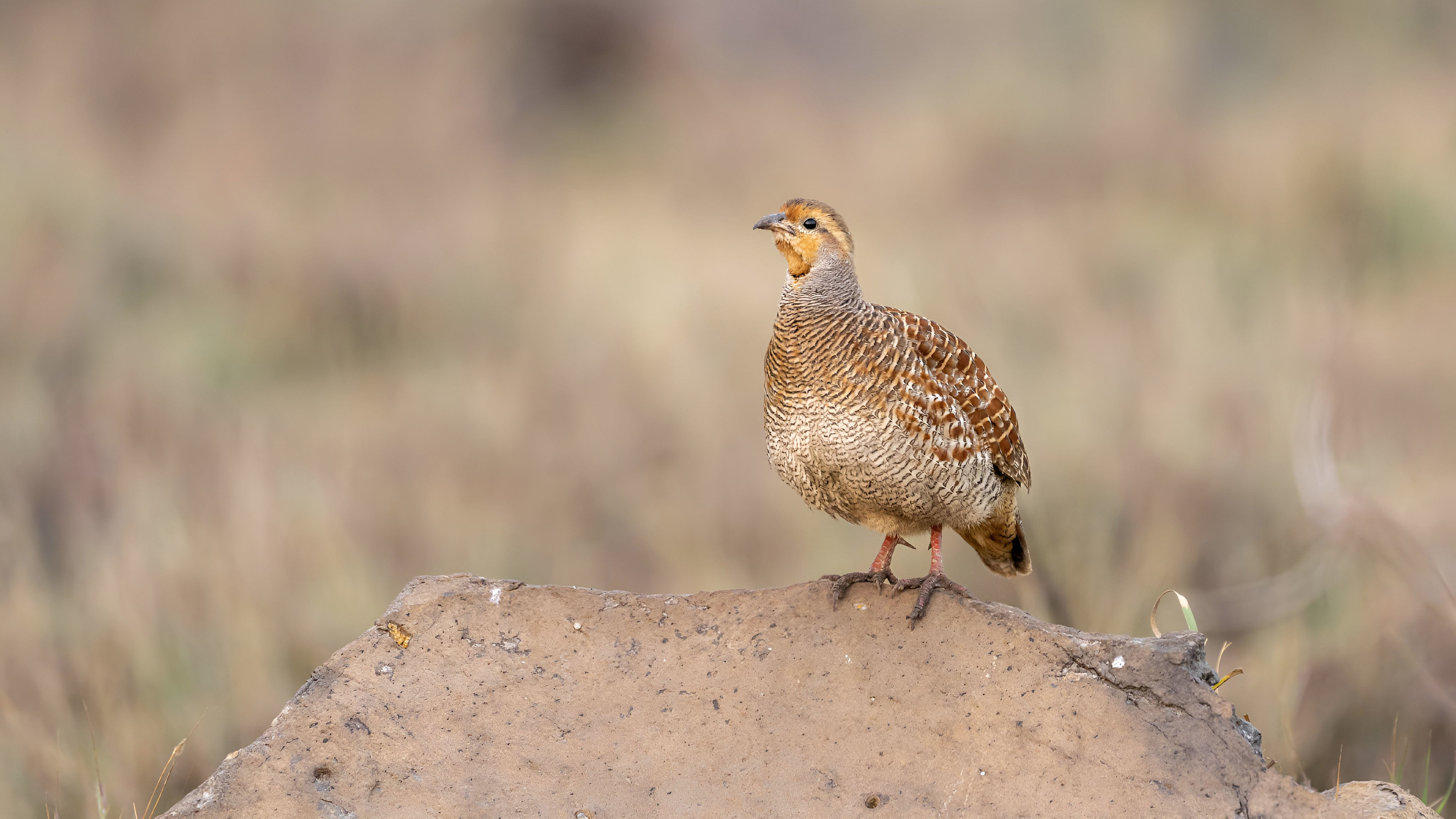
The grey francolin
Credit: iStock Photo
I worked the rusty lever of the hand pump and kept my eye on the tap. The lever squeaked in protest, but the tap remained dry. I operated the lever with more gusto, and the noise grew louder. The clatter filled my head, but the tap was bone dry.
I woke up with a jolt and a parched throat! A legion of creaky hand pumps continued to call to me, beyond the walls of our little cottage at Navilu Kaadu. I looked around, blurry-eyed. There was no hand pump. I was still in bed, nonplussed from this Kafkaesque dream in the morning hours.
Realisation soon dawned that the hand pump cacophony had avian origins — our covey of resident grey francolins. The summer heat and these garrulous ground birds co-conspired to play tricks on my torpid brain.
In my April column, I asked readers to guess the identity of the bird that would grace this column after last month’s guest, the Indian nightjar. Interestingly, everyone who wrote in suggested the red-wattled lapwing, with no mention of this cute bird with a stub for a tail, and outsized vocal cords.
If there was a lord of loud and shrill callers at Navilu Kaadu, then the grey francolin (Ortygornis pondicerianus) would be that lord. Their voluble shrieking during our early days at Navilu Kaadu was my first acquaintance with these roly-poly birds. They once went by the name Grey Partridge.
Grey francolins are shy birds. Called Goujala hakki in Kannada, one hears them more and sees them less. Flocks of dueting grey francolins populate the open fields in and around Navilu Kaadu’s vicinity. They are partial to dry grasslands and scrublands. Oftentimes, when we drive into Navilu Kaadu, we spot an attentive mama francolin escorting her brood on the pathway ahead of us. We slow down and watch the fuzzy fledglings trip and skitter behind their mum.
Grey francolins are medium-sized birds, with middling flying prowess. They just about manage short spurts of flight. Like most ground birds, grey francolins don earthy, grey-brown, streaked plumage that helps them blend into their surroundings.
Summer is peak courtship season. Males holler like the creaky hand pump from my dream, pitching themselves to winsome females. Once mated, the female lays a clutch of four to eight eggs, or more, in ground nests.
At Navilu Kaadu, we often stumble upon hidden nests with speckled eggs the size of chicken eggs, among the wild grass. The francolin mom incubates the eggs for around 18 days. The young are precocial — they feed without help soon after hatching. Grey francolins tuck into seeds, grains, fruits, insects, especially termites, moths, beetles, lizards, and the occasional snake. Long considered game birds in some parts of India, these birds were domesticated for meat and favoured as hunting quarries. Males are larger than females and wield a pair of spurs, which have caught the fancy of bird fight aficionados for centuries. They are quintessential fixtures in Indian lore and poetry. Rudyard Kipling’s father, John Lockwood Kipling, refers to them as grey partridges, in his book ‘Beast and Man in India,’ first published in 1891. He describes male grey partridges as the ‘best fighting birds,’ commanding handsome sums from bird fight buffs of yore. I reckon the grey francolin was the bird equivalent of Muhammad Ali!
Kipling Senior then goes on to heap more praise on them, likening their “rapid and pretty gait” to that of a “graceful girl tripping along with a full skirt well held up.” He then adds, “The Indian lover can pay his sweetheart no higher compliment than to say she runs like a partridge.” The International Union for Conservation of Nature (IUCN) classifies grey francolins as of ‘Least Concern.’ But farmlands shorn of native vegetation and reckless use of pesticides are fast imperilling their habitats. A bird that can duel like Muhammad Ali and drift like a damsel; wary, shy, yet raucous — the grey francolin is a fluffy bundle of paradoxes.
Can you guess which is the bird with weird vocals waiting in the wings for the June column?
Rooting for Nature is a monthly column on an off-kilter urban family’s trysts with nature on a natural farm. The author chipped away at a software marketing career before shifting gears to sustainable entrepreneurship and natural farming. She posts as @ramyacoushik on Instagram. Reach her at bluejaydiaries@gmail.com